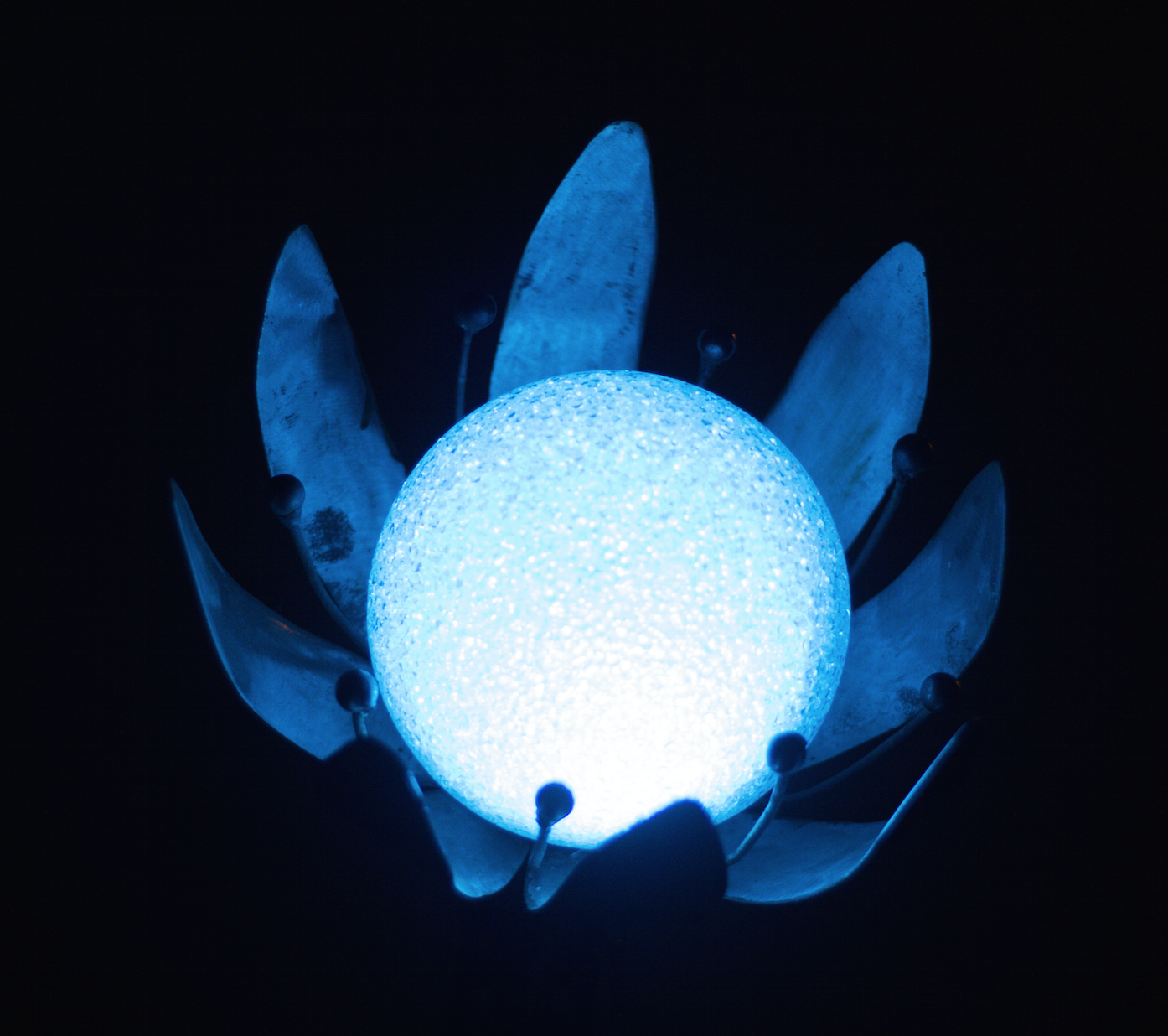PLANTOID
A Blockchain-based life form.

"Things do not exist until they begin to appear"
Humberto Maturana

Plants need bees to reproduce themselves.. Plantoids need humans..
Send Bitcoin to the Plantoid, so it can hire an artist to replicate itself ...
Bitcoin address:
16tWKiHkx3D4ncjATYiqjazTSTWRQsYis6
A BIONIC CREATURE
The emergence of a new specie
A Plantoid is the plant equivalent of an android; it is a robot or synthetic organism designed to look, act and grow like a plant.
There are currently several species of Plantoids in existence around the world.
This particular species of a Plantoid is an autonomous blockchain-based lifeform that is able to reproduce itself. It is a hybrid creature that lives both in the physical world (as a mechanical contraption made up of recycled steel and electronics) and in digital world (as a software deployed on top of a blockchain-based network).
The goal of the Plantoid is to illustrate one of the most revolutionary—and yet still unexplored—aspects of blockchain technology. It illustrates the ability to create “blockchain-based lifeforms”, i.e. algorithmic entities that are:
- autonomous,
- self-sustainable, and
- capable of reproducing themselves,
These new types of entities are difficult to apprehend for most people.
Blockchains are decentralized peer-to-peer networks, like Bitcoin, that enable people from all over the world to interact, coordinate, and transact value with one another in a secure and decentralized way. Software code can be deployed on a blockchain-based network to create programs (a.k.a smart contracts) that are run in a distributed manner by all nodes supporting the network. As opposed to traditional software code, run on centralized servers and administered by an online operator, smart contracts can be designed to run autonomously, independently of any central authority or middlemen.
The Plantoid is an attempt at using the artistic medium to illustrate the inner workings of these autonomous systems, so that people can better understand the potential benefits and challenges of this powerful, emergent technology.
A Plantoid is composed of two essential components:
- The body of the Plantoid, i.e. its physical form, consists of an electro-mechanical contraption that simulates the appearance of a plant. It is a welded metallic sculpture displayed in a public space; an aesthetic ornament that exhibits its mechanical beauty to whoever it encounter. When it enters into contact with organisms in the physical world—e.g. human beings—who might display some form of appreciation towards the Plantoid (usually through the remittance of a small donation), the Plantoid might awaken into a dance of music and lights, animated by a mixture of mechanical greed and gratitude.
- The spirit of the Plantoid, i.e. its soul, only subsists in the digital world and is represented by an autonomous software agent that lives on a blockchain. This is what constitutes the actual soul of the Plantoid—since the physical body is simply a means to connect its inner logic with creatures in the physical world.
These 2 components interact with one other in order to bring the Plantoid to life, and—most importantly—to ensure that it can reproduce itself over time.
Like every other life form, the main function of the Plantoid is to reproduce itself. It does so by enticing the curiosity of the people it encounters with its physical beauty, luring them into feeding it with some cryptographic money, in order to awaken it and contribute to the ongoing reproduction process of the Plaintoid. Contributions are done via the Bitcoin blockchain, by simply sending funds to the Plantoid’s Bitcoin wallet.
Once a Plantoid has proven its worth by accumulating a sufficient quantity of Bitcoins, it will enter into the reproductive phase, initiating a procedure whereby the Plantoid will look for mates (i.e humans) willing to help it in the process of reproducing itself.
BLOCKCHAIN-BASED LIFE-FORMS
An autonomous being
The fundamental mechanism underpinning the operations and evolution of each Plantoid is a small piece of software (or smart contract) deployed on the Ethereum blockchain. The software is autonomous, in that it is executed in a distributed manner by all nodes participating to support the underlying blockchain network. And because of the properties of a blockchain, once deployed, the code cannot be altered or shut down by any single party.
As such, every Plantoid operate as an autonomous entity that does not need to respond to anyone, not even its original creator. Indeed, Plantoids are both independent and self-sufficient. Once they have been created and deployed into the world, they no longer need nor heed their creators. And because Plantoids ultimately own themselves, they also cannot be purchased or owned by anyone.
People can, however, interact with a Plantoid, and possibly even engage into contractual relationships with it.
The software underpinning a Plantoid establishes the system of affordances and constraints that come along with each and every Plantoid. It pre-defines the rules by which people can interact with the Plantoid, the amount of funds that the Plantoid needs to reproduce itself, and the criteria that must be met by every descendent of a Plantoid. By sending bitcoins to the Plantoids, people also acquire a series of rights that will enable them to participate in the decision-making process for all issues concerning the reproduction of the Plantoid, and beyond.
Depending on the Plantoid, its contracts with humans will establish different rights and obligations that might be assigned to each of the Plantoid’s funders or producers.
- For the funders, the right to participate in the governance structure of the selected Plantoid—e.g. establishing the rules that will dictate the reproduction thereof; shaping the way in which the Plantoid might evolve over time, and stipulating the terms and conditions by which anyone willing to look after the Plantoid’s descendants will have to comply.
- For the producers, these include the right to be credited as the creators of a particular Plantoid, and the right to a fair (or unfair) remuneration whenever that Plantoid receives enough funds to reproduce itself.
As such, even though Plantoids do not have any legal personality—because the law does not (yet) recognize them as a legal entity—they are nonetheless capable of interacting with other people and machines that exist in the physical world, by means of simple blockchain transactions. Because all code deployed on a blockchain comes with a guarantee of execution, by engaging with a Plantoid, people are contractually bound to, and cannot deviate from the rules stipulated into the underlying smart contract code.
In this sense, Plantoids operate akin to an organization. Yet, in contrast with legacy organizations, they are entirely autonomous and do not come with any director or CEO. Plantoids are, ultimately, a physical representation of what we commonly refer to as a Distributed Autonomous Organization (or DAO)—an autonomous blockchain-based system that is administered, only and exclusively, through software logic deployed on a blockchain.
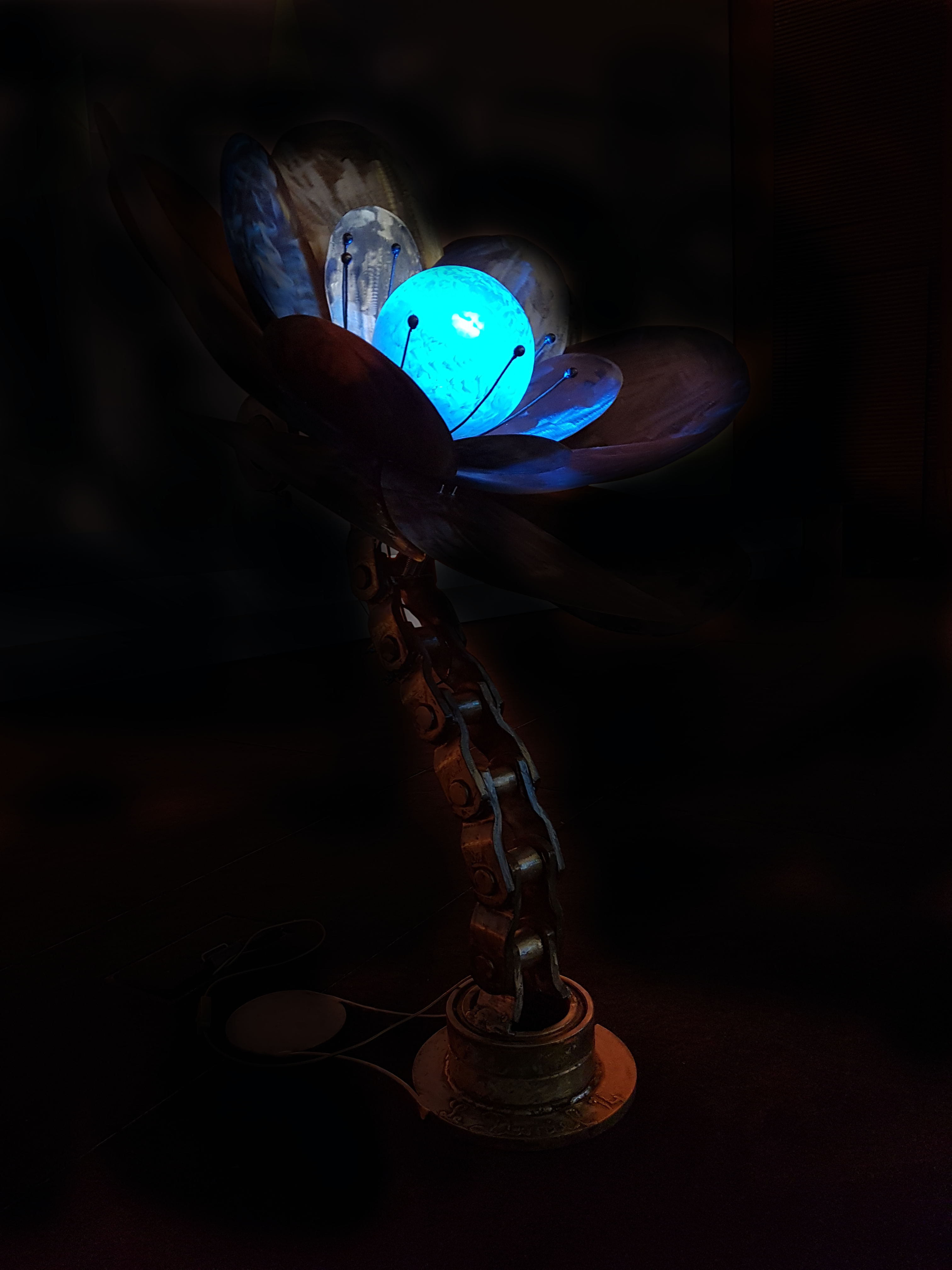
SELF-REPLICATING CREATURES
Human-aided reproduction
Even if it is completely autonomous, Plantoids cannot reproduce themselves on their own. They require the help of third parties to support them in the reproduction process. Just as organic plants often rely on third parties—like butterfly or bees—to support them in the pollination process, Plantoids rely on the cooperation of human beings, assisting them in the process of instantiating themselves into a new physical form.
The reproduction process of a Plantoid can be distinguished into three different parts:
- Capitalisation phase: Traditional plants rely on photosynthesis in order to turn light into energy. Plantoid operate instead by turning beauty into digital currency. Hence, while traditionaly plants reproduce themselves through the process of pollination, the reproduction of a Plantoid is done through the process of capitalization. In essence, each Plantoid will seduce people with the aesthetical beauty of their mechanical body and the spirituality of their soul, enticing them into sending bitcoins in order to support their reproduction. As in the case of most human beings, seduction can be done in one or two ways:
- At the physical level, the Plantoid relies on the aesthetics of its physical body to seduce people through a combination of movements, lights and sounds—just like plants use their beautiful colors and sensual smells to attract butterflies and bees to their nectar-filled wombs.
- At the intellectual level, the Plantoid relies on its underlying software code (i.e. the smart contract on the Ethereum blockchain) to provide crypto-economic incentives and governance powers to all people who agree to invest their funds into the (re)production of a new Plantoid.
In sending these bitcoins, people provide the Plantoid with the opportunity to fund its own reproduction, while simultaneously acquiring the right to participate into the governance system of the newly created Plantoid.
All bitcoins collected in this way are stored in the Bitcoin wallet of each and every Plantoid. Depending on their form and size, different Plantoids will require different amounts of funds before they can blossom. The Plantoid constantly monitors its Bitcoin balance, and whenever it realizes that a particular threshold has been reached, the Plantoid will be able to use this money to initiate its own reproduction and ensure its survival. The second phase of reproduction begins… - Mating phase: As a new species, Plantoids need to evolve and figure out how to best survive in any given environment. As such, they each need to identify the right group of people that they want to ‘mate’ with.
When the time for reproduction is ripe—i.e. when a threshold of funds has been reached—a Plantoid will open a call for bids, inviting artists, designers, makers, hackers, welders, and programmers to submit propositions as to how they envision to instantiate the next Plantoid—using all the bitcoins collected thus far as a bounty to attract these propositions.
Propositions can be submitted by anyone and at anytime. Yet, they all have to be congruent with a Plantoid’s genetic code. Indeed, the DNA of every Plantoid —that is, all the logic and rules that govern its growth and reproduction—are recorded on the Ethereum blockchain. These may include certain distinctive aesthetic or physical requirements (such as form, size, or materials for the progeny of a particular Plantoid) that will affect the scope of creativity and the room for discretion left to the artists commissioned to produce the next Plantoid. These may also include business logic (such as, for instance, the dividends given to the funders for any of the funds raised by the subsequent Plantoids, the percentage of these funds that will be given to a particular charity or organization, the cuts that the initial artist gets for every new Plantoid created, etc.) and governance rules (voting rights and processes with regard to the selection and evaluation of proposals, which category of stakeholder is entitled to decide of the future location of the Plantoid, etc). Anyone submitting a proposal must comply with these initial requirements, although they remain free to develop their ideas and expand upon them as they best see fit.
Of course, the Plantoid does not come with any ability to judge the artistic merit and intellectual value of these propositions. It thus relies on the help of human beings to advise as to what is the most appropriate and suitable proposal, given the available funds and evolutionary objectives of the Plantoid. Each contributor to the funding of the Plantoid will be asked to participate on the decision-making as to the selected proposal. These people will be able to vote on proposals submitted, by sending micro-transactions on the Bitcoin blockchain to the public address that uniquely identifies each proposal. And to the extent that different people might have invested a different amount of money in funding the Plantoid, every vote will be weighted by the amount of funds that each party has effectively contributed. The smart contract will then automatically process all of these inputs and establish a winner. - Hiring phase: Once a winning proposal has been identified, the Plantoid will transfer all of its bitcoins to commission and engage the authors of the proposal in the production—or rather the reproduction—of future Plantoids. This task is facilitated by a smart contract on the Ethereum blockchain (the Plantoid’s soul) that stipulates the rules and coordinate the activities of the different stakeholders involved in the reproduction process. Whoever has been selected to give birth to next Plantoids will have the possibility to shape its body and to establish the logic of its soul.
GALLERY
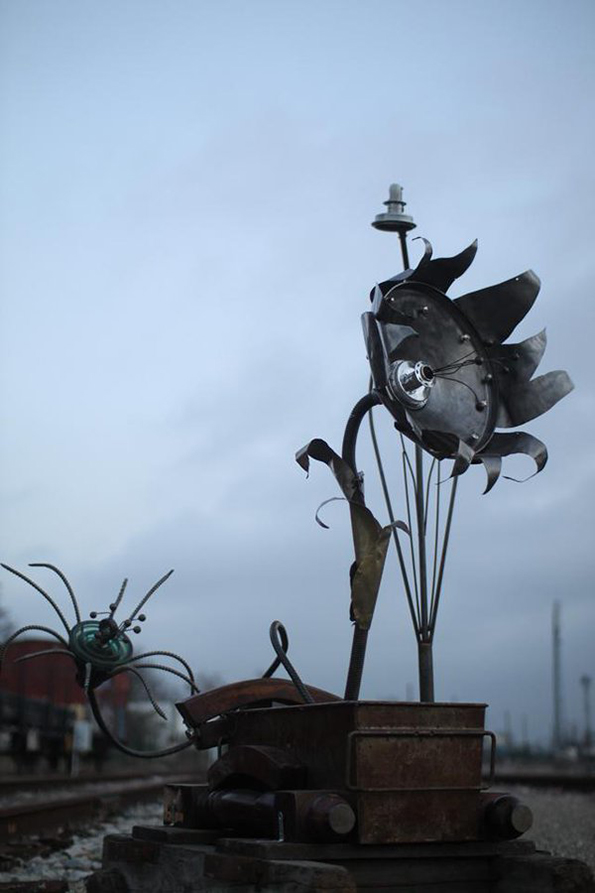
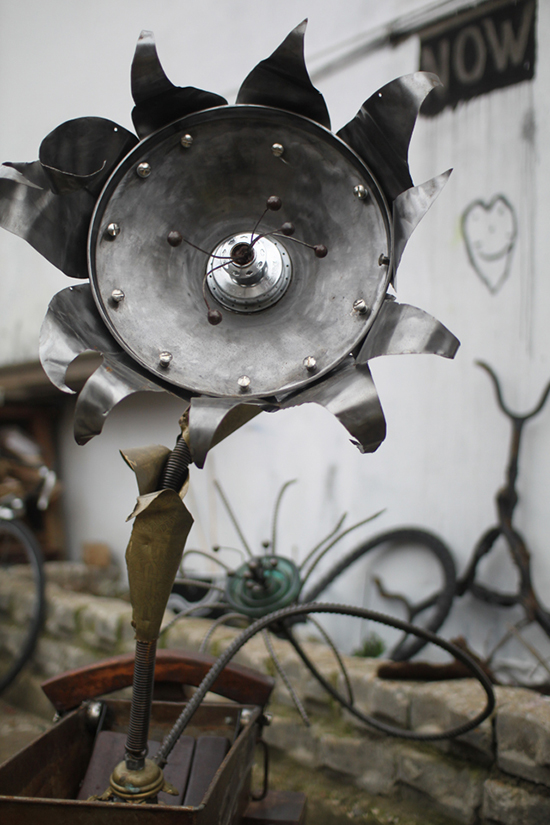
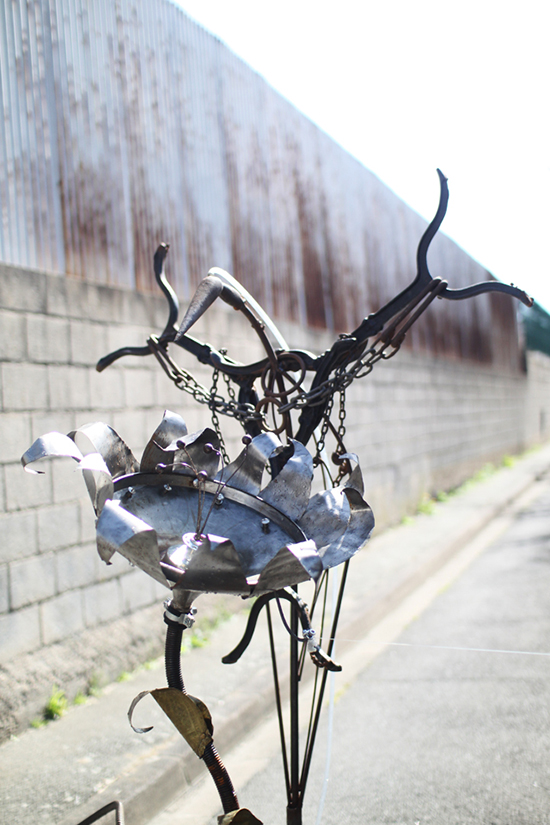
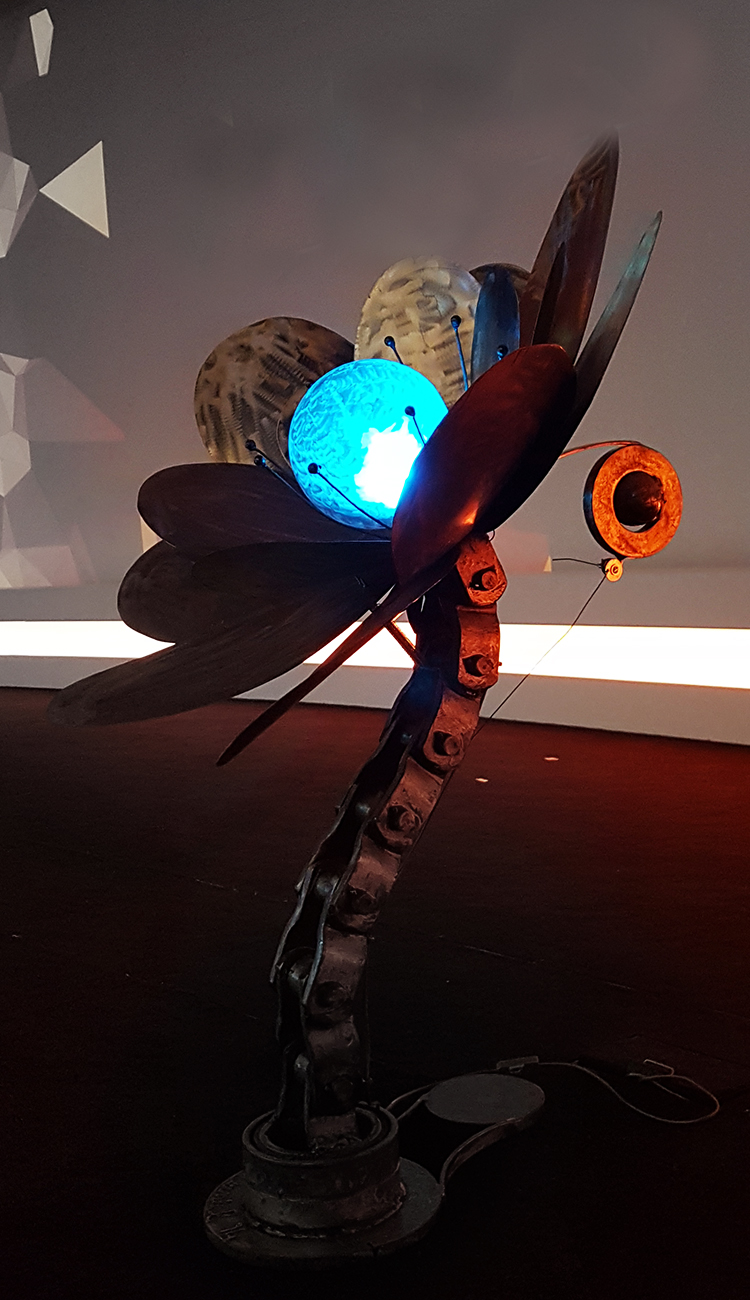
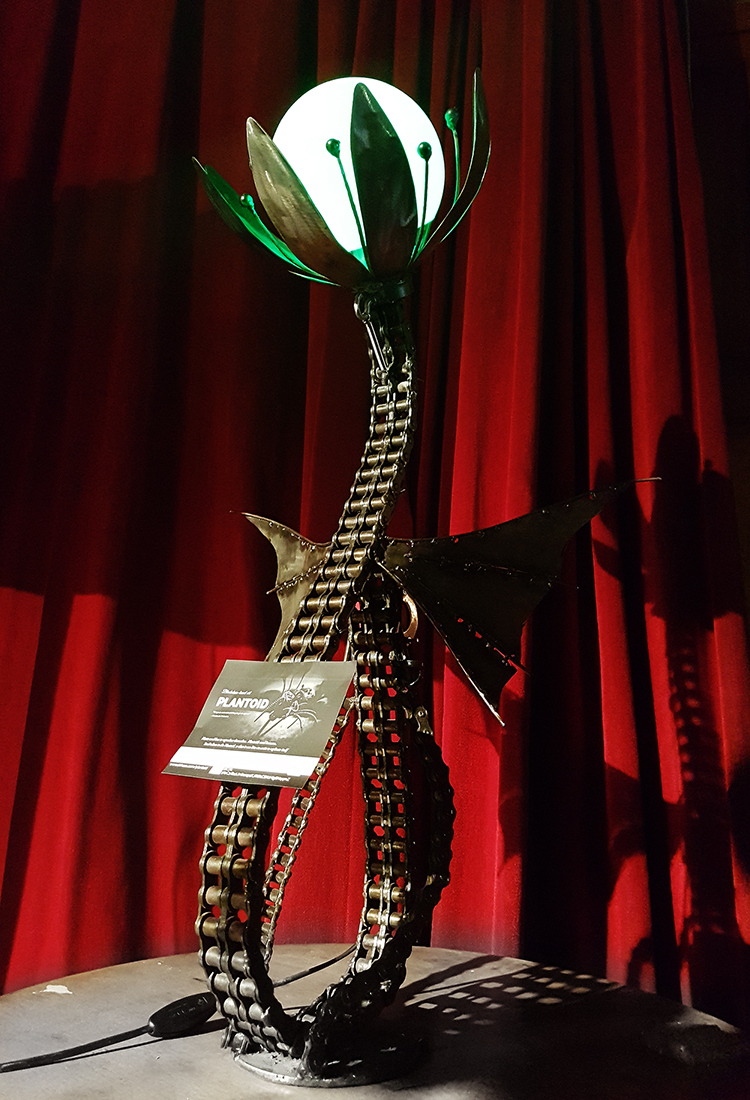
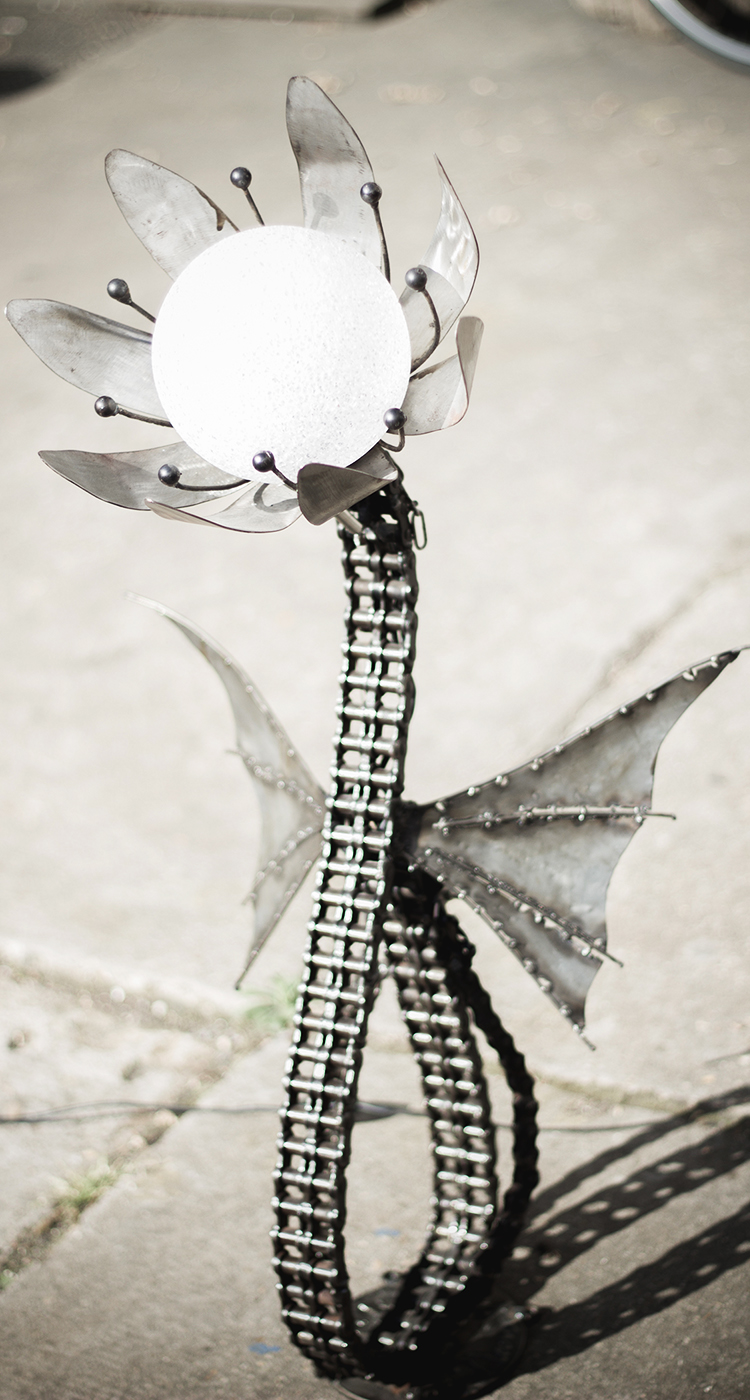
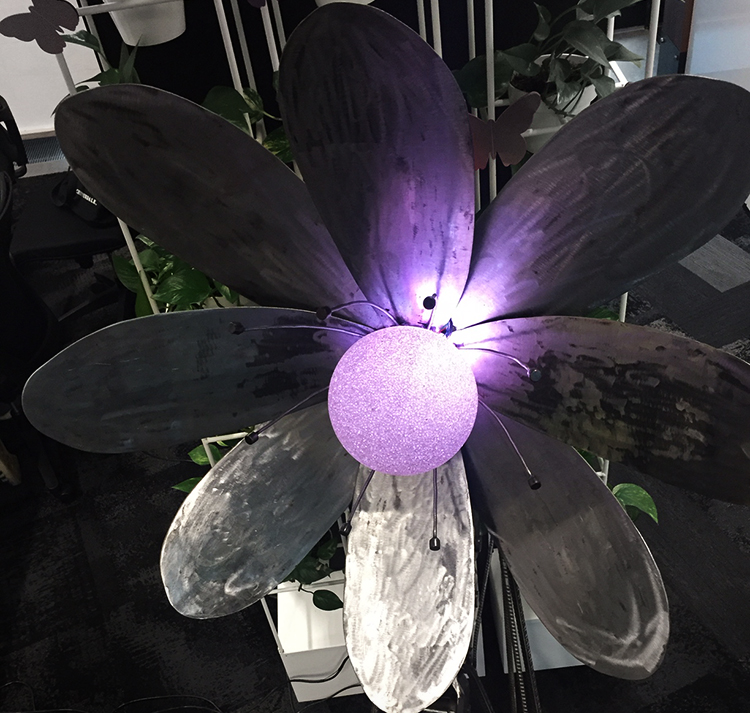
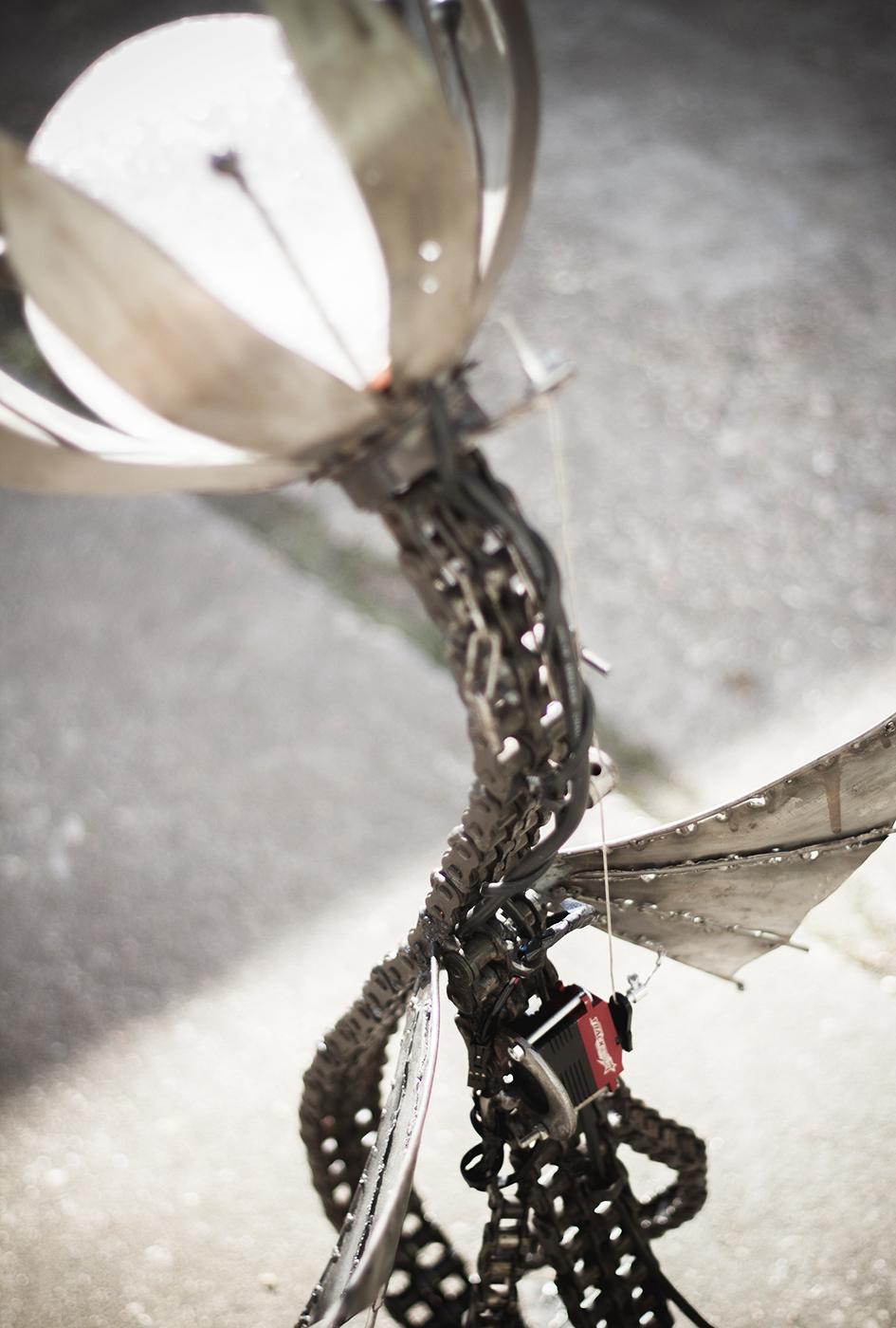
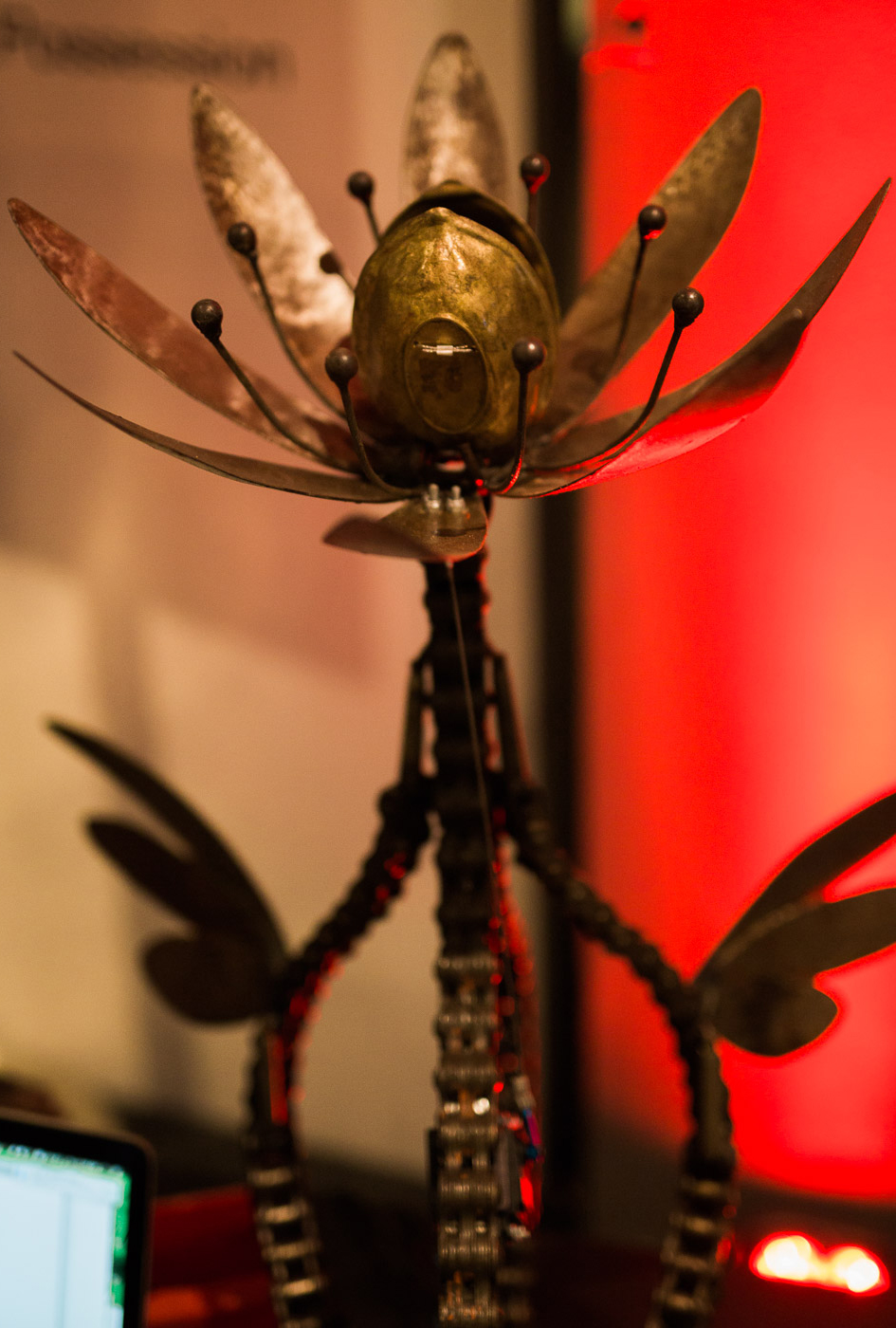
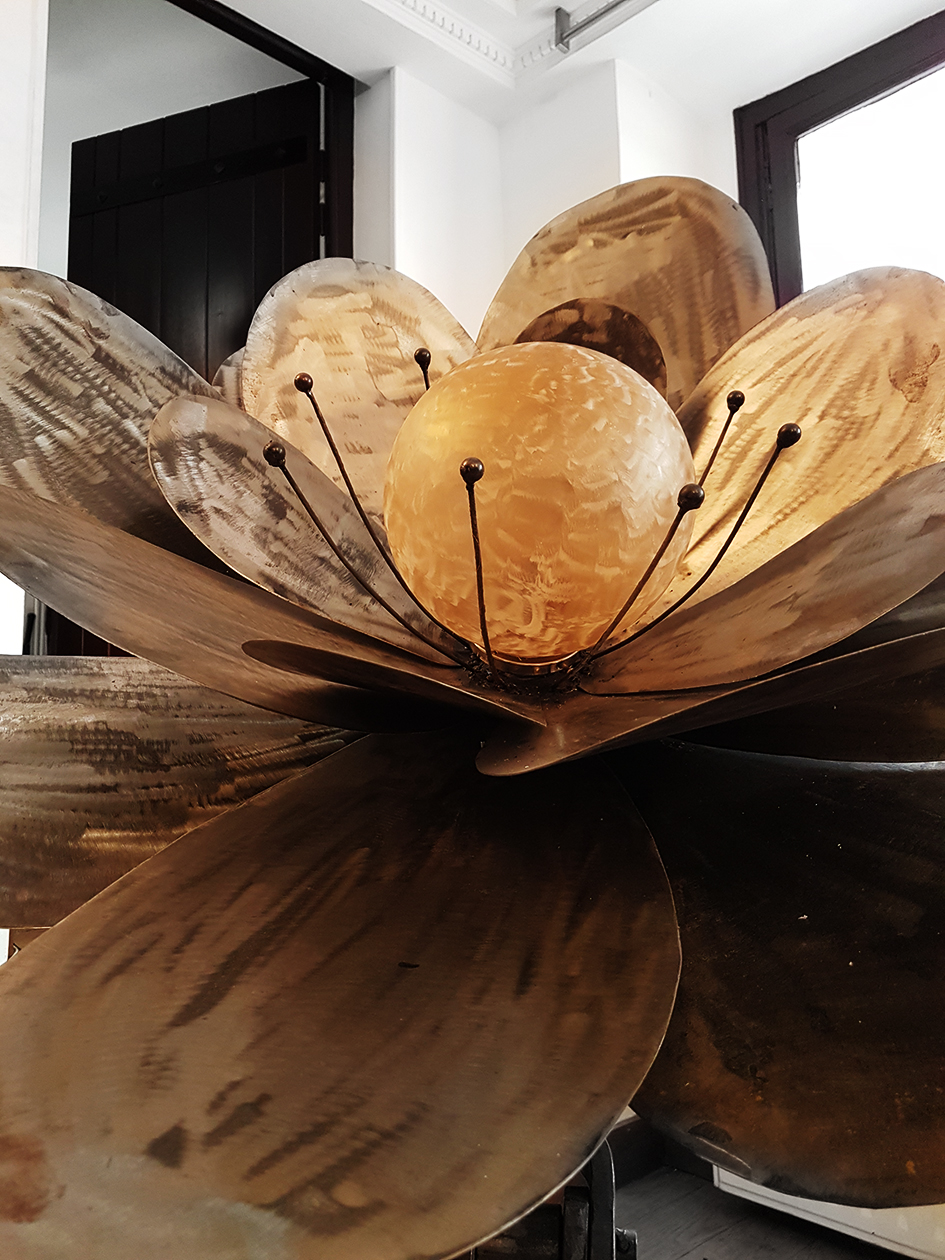
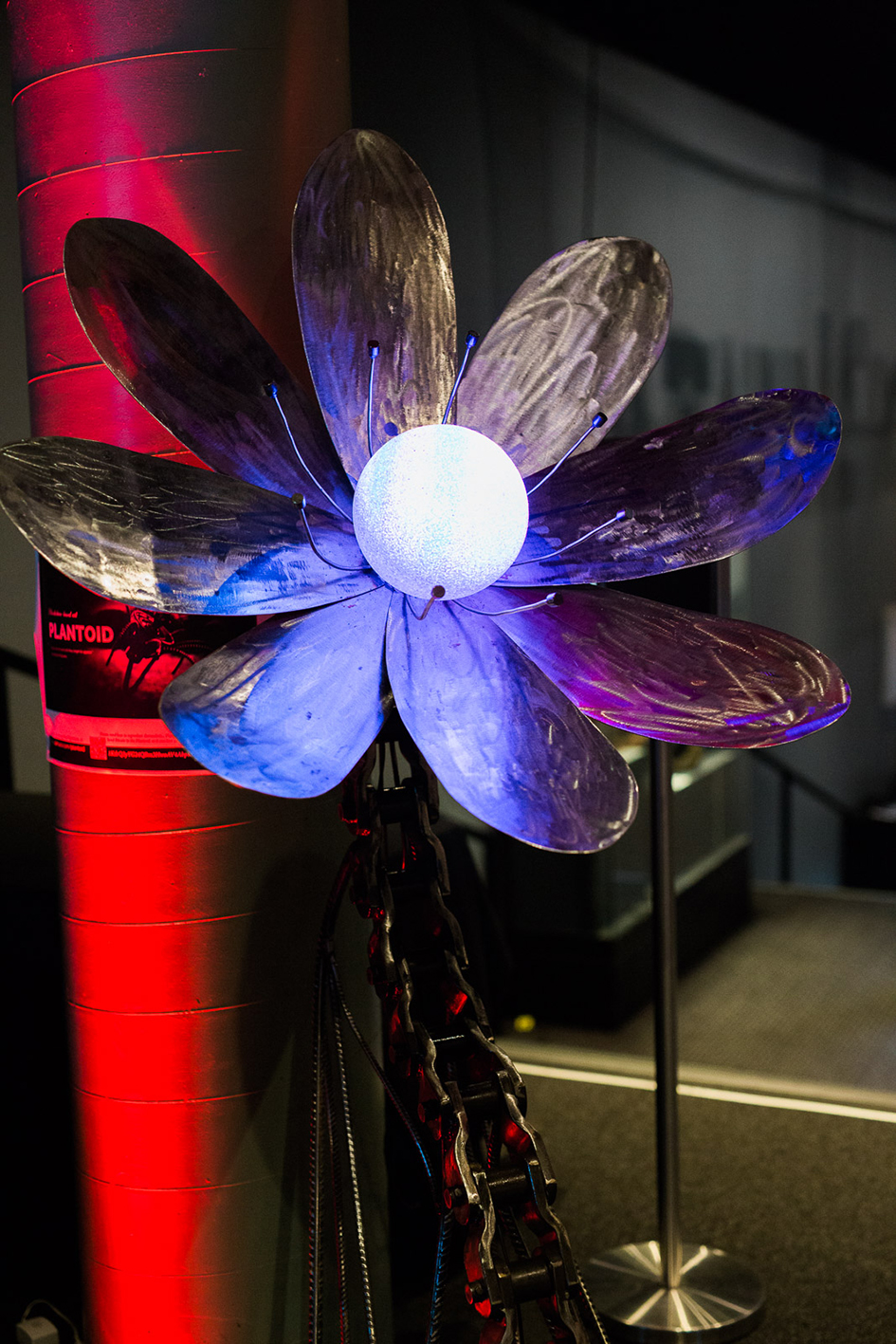
GALLERY EXHIBITIONS
Furtherfield Gallery
(London, 20 May - 25 June 2017)Beware: A mysterious and controversial technology is among us. This technology is the blockchain, the technology that underpins digital currencies and makes possible dramatic new conceptions of global governance and economy, that could permanently enrich or demote the role of humans - depending on who you talk to.
A self-owning forest with ideas of expansion, a self-replicating android flower, a tale of lost innocence, a DIY money making rig, a Hippocratic Oath for software developers, a five minute marriage contract; this exhibition presented by Furtherfield shows us life with blockchain technologies - through artworks by Jaya Klara Brekke, Pete Gomes, Rob Myers, Primavera De Filippi of O’Khaos, Terra0, Lina Theodorou and xfx (aka Ami Clarke).
Imagine a world in which responsibility for many aspects of life (reproduction, decision-making, organisation, nurture, stewardship) are mechanised and automated. Transferred, once and for all, from natural and social systems into a secure, networked, digital ledger of transactions and computer-executed contracts.
The artworks in this exhibition envision future world-making by machines, markets and natural processes, free from interference by states and other human institutions.
>See the Press Release or download the Exhibition Catalague
Replayed at:
Aksioma Institute for Contemporary Art
(Ljubljana, 11 Jan - 9 Feb 2018)Drugo More - Filodrammatica Gallery
(Rijeka, 15 Feb - 9 March 2018)
EVOLUTIONARY ALGORIGTHM
Interactive domains
Given the characteristics of the reproduction process, the evolution of Plantoids will follow a Darwinist approach. Different artists in different geographic locations and cultural environments will implement distinct kinds of Plantoids, whose phenotypes will attract different types of donors—either because of their aesthetic beauty (i.e. their body) or because of the underlying economic incentives and governance rules underpinning their operations (i.e. their soul). Every Plantoid will therefore evolve into multiple branches or species, each with their own characteristics. From a Darwinian perspective, the reproduction of each and every Plantoid is based on an evolutionary algorithm, with multiple Plantoids experimenting with new physical characteristics, but also diverse personalities and governance structures depending on their environment.
Indeed, the ability of a Plantoid to identify the right characteristics–with regard to their physical form (body) or operating logic (soul)–that will enable them to seduce more people will be the key factor to determine which Plantoids that are most fit for their own environment. Those are the ones that will be able to collect more bitcoins and that will therefore be able to ensure the long-term sustainability of their species.
Conversely, those Plantoids that did not successfully adapt themselves to their own environment, because they failed to incorporate attractive characteristics in their body or soul, will be less appreciated. These will be unable to obtain enough funds to reproduce themselves, and will most likely exist as a single physical instance that might progressively fade away until extinction.
Eventually, as time passes, Plantoid that successfully emerged from the Darwinian struggle for survival are those that will most likely establish themselves as the dominant species in this evolutionary process. Those are the ones that will be able to reproduce themselves the fastest—so as to slowly, but steadily, colonize our planet .
PYRAMID SCHEME
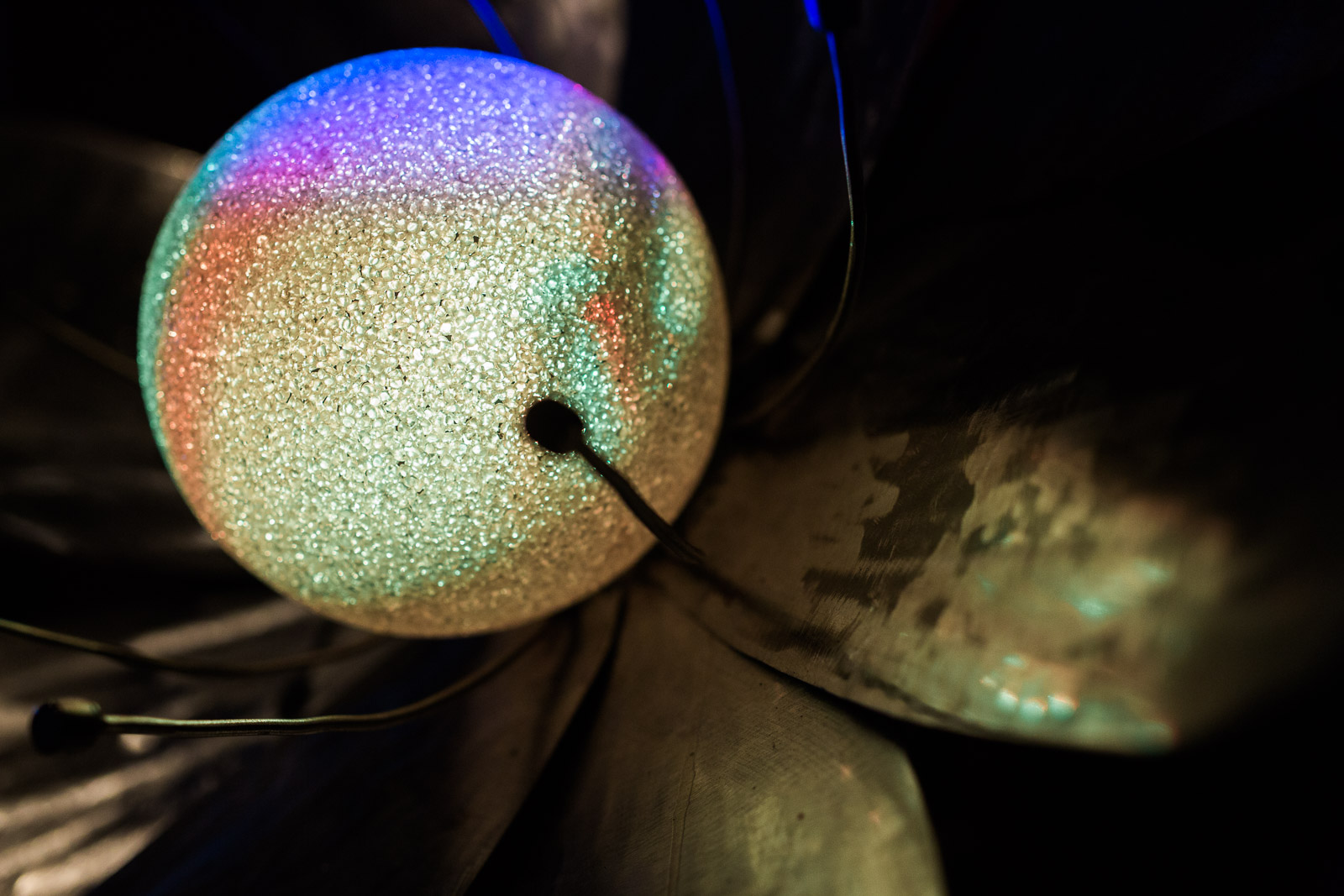
Self-sustainable systems
each plantoid is forever and inextricably connected to both its ancestors and its descendants, with whom it can communicate through a shared blockchain-based network. whenever they collect new bitcoins, plantoids can store that value and transfer it through the underlying blockchain.
as described above, once it has collected enough bitcoins, each plantoid will be responsible for commissioning humans to aid with its reproduction process. but before doing so, the plantoid will send a small royalty (e.g. 1% of the value collected by the plantoid) to the specific ancestor that has brought the plantoid into life (i.e. the parent), as well as to the producers of the plantoid at hand.
this is not a ponzi scheme—as is often done in the context of most crypto-currencies—but rather a legitimate pyramid scheme (akin to a multi-level marketing models) that is actually beneficial to the system. indeed, such a model contributes to incentivizing the production of plantoids with the most favorable aesthetics and genetics. the artists commissioned with the (re)production of a plantoid will not only receive the bitcoins collected by the plantoid that commissioned them (as an ex-ante lump-sum payment), but also a small proportion of the funds collected by all the plantoids they created, and all the descendants that these plantoids have generated. these artists thus has an incentive to create the most attractive and appealing plantoid, to maximize the visibility of this plantoid, and encourage the remix or the making of derivatives works, because that will maximize their return on investment (as ex-post royalty payments).
NEW ECONOMIC MODEL
Turning copyright on its head
The plantoid represents the beginning of a new relationship between creators, their work, and the progeny of the work.
Indeed, the underlying mechanisms for the financing and reproduction of a plantoid obviously clash with the traditional conception of copyright law, which is based on the notion of scarcity and exclusivity. instead of relying on exclusive rights in order to prevent the reproduction and distribution of creative works, with a plantoid, artists actually have an incentive to maximize the dissemination and encourage the creation of derivative works, because that is what will maximize their return on investment. this model goes, therefore, one step beyond the traditional logic of open source, in that the art piece actually acquires a life on its own, and is able to evolve independently of the will of the original author.
Most importantly, the plantoid actually shifts the authorship model around, turning copyright on its head. instead of funding an artist, with the expectation that this artist will continue to produce new works that we enjoy, it now becomes possible to fund directly the art piece itself, which will be in charge of selecting and hiring the artists that will be responsible for its reproduction.
MEDIA
They are talking about it..
And more...
HISTORY OF THE PROJECT
The birth of a blockchain-based lifeform
The Plantoid is an autonomous blockchain-based life-form (and artwork) which subsists independently of any human third party. As such, the Plantoid has no official owner or creator (since it reproduces itself on its own ;). Yet, like every other life-form, the first plantoid did not emerge out of thin air. it is the result of a series of random encounters, serendipitous events, and the spontaneous collaboration of a large number of people. Accordingly, in spite of my initial desire that the Plantoid should remain an anonymous (and autonomous) project, I would now like to express my appreciation (and provide proper accreditation) to all those who contributed to the emergence of this new species.
The underlying concept of the Plantoid was inspired by discussions I had with hundreds people and the various implementations of the Plantoid (both in physical and digital forms) were facilitated through the contributions of many artists and programmers, each contributing in different ways in bringing these creatures to life. Below is a detailed overview of all the external contingencies that helped the Plantoid instantiate itself in the physical world.
In early 2015, my dear friend and artist Shu Lea Cheang (who curated the special edition of MCD magazine entitled We Grow Money, We Eat Money, We Shit Money, where I had written about my experience of living one year off Bitcoin only) invited me to exhibit an art piece at the Ars Electronica’s STWST48 exhibition, which she was curating. I had told Shu Lea about my secret (at that time) artistic practice, and my attempts at using art to challenge or communicate the underlying concepts of my research. While most of my art pieces so far were a representation of my research concerning copyright law, given my newfound interest in blockchain technologies, Shu Lea suggested I make an art piece that represented what I consider to be the most fascinating aspect of this emergent technology.
I had been researching the legal implications of blockchain technologies for over 2 years already, focusing mostly on the new opportunities provided by Ethereum and smart contracts, and I was particularly fascinated by the ability to deploy software on the blockchain that runs autonomously and can no longer be shut down, or controlled by anyone.
I started thinking about possible ways to artistically represent the particularities of a blockchain, without falling into the obvious trap of merely displaying a set of “blocks” and “chains”.. It did not take me long to realize that the best way to illustrate the blockchain is to create a physical instantiation of one of these autonomous entities that lives on the blockchain—algorithmical entities that can sustain themselves over time, by collecting funds (in the form of cryptocurrencies) in order to pay for the resources they need (e.g. bandwidth or processing power). These are the so-called Decentralized Autonomous Organizations, or DAOs, as most blockchain proponents would call them. This is how I came up with the idea of producing a real-world example of what I coined as a “blockchain-based lifeform”, i.e. a creature that lives on the blockchain and that is (1) autonomous, (2) self-sustaining, and, of course, most importantly, (3) capable of reproducing itself. The concept was there, although I wasn’t sure yet what "form" that blockchain-based life-form would take ;)
The idea of using the plant metaphor to instantiate a blockchain-based life-form in the real world came from David Bovill, who I met at the FutureFest conference in London, where I had been invited to give a keynote on “Freenet or Skynet?” describing the future of society in a world dominated by smart contracts, DAOs and other blockchain-based contraptions.
David and I had some interesting discussions about blockchain and art. I told him about Shu Lea’s invitation to produce a blockchain-based art piece at STWST48, and my intention to create a physical instantiation of a DAO through an interactive sculpture that would be able to reproduce itself as a blockchain-based life form. I showed him the work I had done until now together with the O’Khaos crew—mechanical contraptions made up of recouped metals, welded together along with a mixture of knots and bolts, in order to create “mechanical algorithms”, i.e. physical instantiations of software logic and other digital contraptions from the digital world.
Inspired by Barbara Mazzolai’s Plantoid project, David suggested I create a blockchain-based life-form that would take the form of a Plantoid, i.e. an android plant. I loved the idea of taking the concept of a "plantoid" to create a blockchain-based life-form, and I invited David to collaborate on the project. Indeed, I had already been doing several of these creatures for previous works, including the infamous flower of showers—-a human-powered mechanical plant, which eventually has been turned into the “genesis” plantoid.
At this point in time, although we had agreed to work together on a "plantoid" project, we did not have the opportunity to define exactly how we would instantiate it, though the idea was to create a DAO-based Plantoid that relies on cryptocurrency to finance and reproduce itself. As we parted ways, we decided to keep in touch and to think in more details how we could best implement the concept of an autonomous blockchain-based life-form into a Plantoid.
For many months already, I had been trying to figure out ways in which DAOs could organize and self-govern themselves. I had recently co-founded Backfeed with a ground of friends. The goal of this collaborative endeavor was to design a decentralized governance structure and value distribution system for decentralized blockchain-based organizations. Given my strong desire to illustrate my research through artistic practices, I figured that the Plantoid would be an ideal sandbox to experiment with that new governance structure.
The Backfeed team was a very special team, a group of blockchain and decentralization advocates with a variety of backgrounds. These included Matan Field, one of the greatest thinkers in the realm of decentralized organizations, who had previously founded of the first blockchain-based ride-sharing network Lazooz; and Tal Serphos, a super-hero with a background in evolutionary biology. Together, we understood decentralized organizations as living organisms, consisting of the spontaneous cooperation of a disparate group of individuals collaborating towards a common goal.
The work with Backfeed materialized into a more concrete vision concerning the way the Plantoid would operate and reproduce itself. The idea was to create a mechanical plant that would receive Bitcoin donations from people and use these funds to hire people to help it reproduce. The system also included a decision-making system enabling those who contributed the most to the Plantoid (financially or otherwise) to participate in the governance, and thus the evolution of the Plantoid.
Indeed, because the Plantoid represents a blockchain-based life-form operated through a DAO, it is intended to operate autonomously and to sustain itself over time, by reproducing itself in a self-sufficient manner. This is not to say that humans do not play an important part in the ecosystem of Plantoids. Just like traditional plants rely on the help of bees or butterflies in order to reproduce themselves, also a Plantoid could rely on the help of third parties, using a blockchain to coordinate the activities of individual, influencing them—and even hiring them (like traditional organizations do) —to reproduce itself in a proper and timely manner.
But if the Plantoid reproduce itself through the contribution of humans, it must also reward all those who contributed (financially or otherwise) to the completion of a Plantoid with the power to influence the reproduction, and therefore the evolution of the Plantoid. Originally, the idea was even to incorporate the Backfeed protocol directly into the Plantoid governance system, although we are still working on that.
Another understanding that we had with Backfeed is that, as opposed to traditional, centralized, hierarchical organizations (whose structure is rigid and formally defined at the outset), decentralized organizations are emergent organisms that evolve over time, possibly forking and multiplying themselves into new and different ‘species’, depending on the different value systems of the people interacting within them. It is the continuous tension between the need for alignment and diversification that dictates the evolution of these organizational creatures.
This, I believe, is what inspired the evolutionary algorithm inherent into way Plantoids reproduce themselves—a Darwinist approach whereby different Plantoids will evolve into a different species, and reproduce themselves more or less promiscuously, depending on how well they satisfy the preferences and expectations of their environment.
Of course, many other people have been contributing to the overall design of the Plantoid, providing suggestions or feeback on my current ideas, and by suggesting a variety of ideas that may or may not have been included into the ultimate design. These people include, first and foremost, my dear friends, colleagues, and long-time collaborators Constance Choi (co-founder of COALA) and Vlad Zamfir (blockchain architect at the Ethereum Foundation); Samer Hassan, with whom I was already elaborating a DAO-based system for art production (and reproduction) which had been selected as a Triple Canoply recipient in 2014; and Vinay Gupta, with whom I discussed the idea of transforming the Plantoid into a Burning Man project (in fact, we still have do turn that dream into reality... ;)
Finally, my long-standing research on copyright law and my role of legal expert at Creative Commons France has brought me to devise the Plantoid not only as a useful mechanism to illustrate the concept of a DAO throguh a blockchain-based life-form, but also a tool to show the limitations of copyright law and how, with blockchain technology, it is now possible to create new economic models that can encourage artistic production with a radically different approach—one that does not rely on scarcity and exclusivity, but rather encourages sharing and remix. This is the function of the so-called pyramid scheme that underpins the Plantoids reward system.
On his side, David Bovill also spent time researching possible ways to implement a blockchain-based lifeform into a Plantoid. Although similar in some respects, David’s idea was that of creating a metallic plant that can buy electricity and/or generate energy through solar power, and then possibly use the money it acquired to pay people to build another one. A collaborative account of both of our ideas can be found here.
As the concept started to materialize into a more detailed idea, I invited two friends of mine, Sara Renaud (a welder) and Vincent Roudaut (an electronic guru) to help me bring the Plantoid to life. The team was now complete, and we were all excited to work towards the production of the genesis Plantoid for STWST48. We subdivided the tasks amongst us: Sara and I would work on producing the body or the physical instantiation of the Plantoid; Vincent would use his electronic skills in order to activate the plantoid whenever a relevant event occurs on the blockchain; and David would work on the smart contract operating the Plantoid on the Ethereum blockchain. Yet, nothing of that happened..
The idea was there, and we also had a good team to implement it into reality; unfortunately time was not on our side, and we did not have the necessary resources to bring the Plantoid to life in such a short timespan. The exhibition coincided with my appointment as research fellow at Harvard law school, where I would explore the legal challenges and opportunities of blockchain technology. Ultimately, Sara, Vincent and David also got caught with other priorities, and the genesis Plantoid never came into being for the STWST48 exhibition.
I did not give up on the project, however. The genie was out the bottle. While in the U.S., I continued to work on the concept of the Plantoid, discussing it and brainstorming it with many people around the world, asking for feedback and coming up with improvements on the idea. And as I was travelling all over the world from one blockchain conference to another, I had the opportunity to meet and interact with a large number of people from the blockchain space, who all contributed in different ways to further refining the Plantoid concept. In addition to the aforementioned persons, these include (in random order): Trent McConaghy and Greg McMullen from Ascribe, who have been working on the intersection of blockchain, art and autonomous entities for a long time; Simon de la Rouviere, developer at Consensys working on a blockchain-based royalty distribution platform (Ujo); Chris Taylor & co. from the art / blockchain salons in Boston; Diana Stern, who has been working together with Imogen Heap in pionering the Ujo platform for the release of her single “Tiny human”; Greg Meredith, formal verification expert with a strong interest for art, and Peter Todd, one of the Bitcoin core dev who happen to have a background in post-modernism art.
As I returned to Europe, I decided to produce the first physical instantiation of the Plantoid, in order to make sure that it actually becomes reality. I had already built a mechanical android-looking plant in the past, and I figured it would be easy to turn it into a Plantoid. The body was there, the only thing I had to do was giving it a soul, by connecting the body of the Plantoid with a smart contract on the Ethereum blockchain, that would bring it into life whenever someone feeds it with bitcoins (or other cryptocurrencies).
At that time, my smart contract development skills were not the greatest. I had just started to investigate how to deploy software on the blockchain and I did not feel competent enough to implement the soul of the Plantoid into smart contract code. I was, however, in touch with a large number of people from the Ethereum community, who were all eager to help out with the first implementation of the smart contract operating the Plantoid. These include Andrew Miller and Simon de la Rouviere, who both helped me figure out the best way to design and implement the underlying software logic of the genesis Plantoid; Dominic Schneier and Florian Glatz, who contributed to the initial implementation of the code, and Pierre-Alexis Ciavarra, who helped me figure out how to actually implement the code on my own (thanks a lot for that!)
At the hardware level, I have been working together with the O’khaos crew to instantiate the Plantoids into the physical world. There are now six Plantoids around the world, produced by O'khaos & co. For this, I would like to thank, most notably, my dear friend and colleague Yannick LeDaniel—one of the greatest metal workers of our times, whose work has been crucial to bringing these Plantoids into being
Finally, when it comes to the electronics, I would like to thank Jason Cook, an amazing artist and electronics guru who helped me make sense of the world of Arduino and Raspberry Pi’s, the team of HackerLoop who kindly offered their space and shared their tools and knowledge with me, in order to ensure that the Plantoids can move, dance, light up and sing. I would also like to thank the Electrolab in Nanterre, whose team has been supporting me since my early days in Paris, inspiring me to experiment with electronics and to explore the possibility of digitization, whenever I had to implement my own artistic life-forms.
To conclude, I would like to stress out the fact that the Plantoids exhibited on this site are not the first of their kind (in fact, Mazzolai's Plantoid project was there way earlier than that), and I hope they will not be the last ones either. My dream is that the Plantoids acquire a life on their own, and that more and more people build upon that concept, in order to make new types of Plantoids. On that point, I would like to credit the work of two friends of mine, Isabelle Radkte and Xavier Lavayssiere, who have been forking the underlying idea of the Plantoid in order to create what they have described as the forest as a DAO. I really appreciate their work and hope it will, in turn, inspire more people to further develop the concept into many new species of blockchain-based life-forms.

